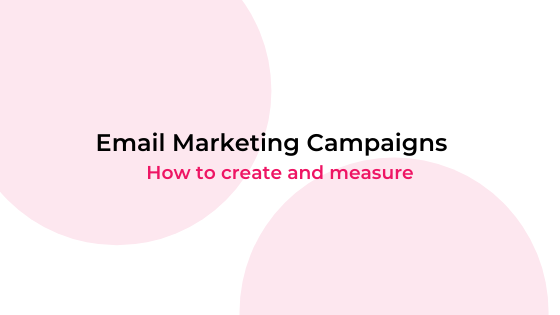Conversion Rate Optimization, or CRO, consists of a set of practices to increase the conversions of a given website, making better use of the traffic that the pages already have without necessarily attracting more visitors.
No matter what the size of your business or what your niche market is, it is very important to create a strategy focused on optimizing your website conversions over time, in order to always achieve good results.
Chances are, in the end, that the CRO will help you greatly increase your marketing ROI.
However, there’s a myth emerging that 2 – 3 % conversion is an average.
The problem is that there are so many variables and ways of managing your conversion rate that it’s near impossible to quantify these figures as an ‘average’.
So let’s talk about what really is a good website conversion rate.
Understand What You Are Measuring
Conversion rates can be very contextual.
For instance testing two versions of a certain page will only track the visitor on that particular page and not those that are deeper into the website.
Some companies will review a 2% conversion as traditionally low compared to other companies however generate significant profits due to their nature of product and high price points.
Other companies are operating upwards of 40% however this is attributed to repeat custom and again is a difficult metric to benchmark against competition.
If you take into account price points on product as well as the conversion rates this provides a better metric for measuring performance (Conversion Rates) of your company vs. others.
Using the Average Order Value in combination with conversion rates provides a closer understanding of how your website is performing against direct peers and websites in different industries.
OK, so an interesting way to look at your data and analyze it is by dividing it into four main categories: qualitative and quantitative analysis, performance and A/B tests.
Keep reading: The Upcoming World Of B2B A/B Testing
Each layer and page of your website needs a unique performance analysis, involving several factors such as UX, UI, SEO, and Conversion.
As understanding your conversion rate is important to know how efficient your pages are and to track your company’s results in general.
The conversion rate can be calculated at all stages of the sales funnel: top to middle, middle to bottom, etc.
Therefore, you need to carefully and separately analyze the home, category, product and checkout.
I’ve separated some tool tips for CRO analysis according to the four factors we talked about earlier.
See below how these groups were separated:
- Qualitative analysis tools
- Quantitative analysis tools
- Performance tools
- A/B testing tools
By adding these analyzes together, you can build a consistent CRO report and gain good insights for continuous improvement and testing.
That will help your sales and marketing efforts and help in converting ‘visitors’ into ‘customers’.
8 greatest tools to improve your conversion rate optimization
Before.
There is no shortage of conversion software and tools in the market. However, not all conversion rate optimization tools were made equal.
A lot of these tools are designed to help customers find new customers and even help them in finding new sales opportunities.
A study from Straight North, analyzed 300000 validated leads from their client base to see how many times people visited the site before converting.
To their surprise 84% of people who did convert did so on the first visit.
This really shows the importance of CRO and how a first impression really means everything.
So, the real way to increase the performance is through Conversion Rate Optimization.
You need to make sure that you are tapping into the needs of your users and providing them a better user experience.
Not only this, you have to make sure that they engage with your website and come back for more. In the absence of this, you will be finding some serious troubles with your sales and marketing efforts.
No engagement means zero benefits and this is the last thing on the list that any designer or marketer would want to check. Websites are facing massive pressures to offer a better all-round experience.
Thankfully, there are many tools that can help you in channelling your efforts and converting the visitors on your website.
Qualitative Analysis Tools For CRO
Look as follows: tracking and identifying the companies who visit your website is essential in knowing deeply about your audience.
By consequence, you can use that to improve your conversion rate optimization techniques.
Getting traffic on your website is one thing.
Converting that traffic into leads is another completely different.
Whoisvisiting.com will help you track the B2B visitors who were interested in your website but did not turn into a goal conversion.
The tool uses analytical measures to tell you about the companies that have visited your website, their email address, their telephone numbers and even the personnel working with that company along with many other details.
This is a great tool for people engaged in B2B marketing.
Considering the fact that 97% of any website’s traffic doesn’t engage well, this tool can help you tap into the interests of the customers and provide them exactly what they need.
Hotjar is a website heatmap tool that provides information about browsing data and user behavior on its pages.
Even anonymously, this data is extremely valuable for decision making regarding conversion rate optimization.
To capture data even more deeply, Hojtar also offers features such as:
- Where visitors to the site hovered and how far they scrolled through recordings;
- Feedback capture tool (incoming feedback);
- Polls and Forms;
- Sales Funnel;
- And surveys.
With this precise information collected by the heat maps, it is possible to draw up an optimization and refinement plan for the site.
Quantitative Analysis Tools For CRO
- Google Analytics
Google Analytics is the most used website monitoring and analysis tool in the world.
It integrates with other Google services, such as Ads and Search Console.
With it it is possible to monitor the profile of those who access your website, most accessed pages, conversions, devices, cities and other data.
It allows you to analyse a sort of informations, such as:
- Data about your page’s traffic;
- Your visitors’ location;
- Source channels and real-time information about what is happening on your site.
And that is just a fraction of what can be checked in the tool.
Keep reading: How To Make The Most Of Your B2B Website Data
- Data Studio
Here’s the cat jump. Think of Data Studio as a data integration tool, as it is a Business Intelligence tool.
You can do an interesting analysis through Google Analytics, but it is through Data Studio that you can analyze this data even more deeply.
It has the possibility of integration with Analytics, Search Console, Tag Manager, Spreadsheets.
And through APIs you can also integrate with tools like SemRush, Moz, Ahrefs and others.
The strategy is to use this data to create, in addition to the analysis, completely customizable reports with real-time updates.
Performance Tools For CRO
- Core Web Vitals
Core Web Vitals has the possibility of analyzing four main blocks: SEO, Best Practices, Performance, and Accessibility.
In addition, it has 6 analyzes that are complementary:
- First Contentful Paint;
- Speed Index;
- Largest Contentful Paint;
- Time to Interactive;
- Total Blocking Time;
- Cumulative Layout Shift.
The use of WebVitals may seem complex at first, but the important thing is to understand that all factors are completely tied up in the performance analysis.
One metric depends on the other so that the overall result is consistent and interesting.
According to the website itself, CoreWebVitals:
“are the subset of Web Vitals that apply to all web pages, should be measured by all site owners, and will be surfaced across all Google tools. Each of the Core Web Vitals represents a distinct facet of the user experience, is measurable in the field, and reflects the real-world experience of a critical user-centric outcome.”
Its three main outputs are:
- Largest Contentful Paint (LCP): that measures loading performance;
- First Input Delay (FID): that measures interactivity.
- Cumulative Layout Shift (CLS): that represents the visual stability.
The main thing with these WebVitals reviews is to be aware of offering a good user experience to your users.
- GT Metrix
GTmetrix is a tool that allows you to understand in detail the loading of your website or blog.
It indicates the download time of each element, which makes it possible to make optimizations, so that the user has the best possible experience with regard to speed.
The main features of GT Metrix are: speed score, loading details, recommendations (what you can do to optimize your site), PDF report generation, tests from various locations and video generation, for example.
A/B testing tools For CRO
- Google Optimize
The objective of Google Optimize is very clear: to create and implement A/B testing strategies.
It allows continuous testing to be done with different combinations of website elements.
You can test any element of HTML code on a page, including blog posts, call to actions, landing pages, images and forms.
It also allows you to test alternative versions of an entire page, as well as several other combinations of page elements, such as headers, images or body copy.
Overall, this helps to increase visitor conversion rates and overall satisfaction.
Google Optimize also offers features such as:
- Native integration with Google Analytics;
- Integration with Hotjar;
- Basic URL targeting;
- Segmentation by geographic area;
- Support for web apps;
- User behavior and technology segmentation;
- Technical segmentation (JavaScript, cookies, data layer);
It’s great to keep a tab on the competition and keep checking what they are up to.
It is critical for every business to understand its competition and make sure that they are a step ahead of these websites too.
If you are also stuck in a highly competitive niche, iSpionage’s Competitor A/B Test Monitoring will help you in ensuring that you are not making changes based on your individual intuitions but on the way that the market is moving.
With this tool, you will be able to check the A/B testing of your competitors as well as their multivariate testing schemes.
Also, you will be able to take snapshots of their pages and devise your own tests so that you can win the game.
Conversion marketing for B2B sites
Conversion marketing for B2B sites is most commonly associated with conversion marketing to online shops (ecommerce sites).
But a typical example of conversion marketing is visitors who have abandoned your site before making an enquiry either via a call or email so effectively they have not taken up your service or product.
This is why it is key to use B2B marketing tools such as whoisvisiting.com to identify businesses visiting your site in the first instance.
It gives you the opportunity to use conversion marketing to re-engage or tender for the business.
Never write off a visitor. Just because they haven’t enquired doesn’t necessarily mean they’re not interested in your product or service.
Firstly ask yourself, how many sites you have been on which you find value in their product or service and haven’t left an inquiry.
There are hundreds of tools that you can choose from and each one of them will be providing you a different kind of CRO experience.
Every tool comes with its own set of advantages.
You can keep on trying these tools and checking what really works for your own websites and context.
Making sure that they are being used for some great CRO processes will only help you in getting more value for your money.
So get started with the process and try each of these tools to create responsive and engaging websites that really solve their purpose.
Remember, testing is the only way in which you will be able to optimize your website and get great tools.
You have already invested a lot of time and efforts on wasteful expenses and experiments.
Trying these tools will help in mitigating the damages and ensuring a better user experience as well.
Remember, CRO is just one part of the game. You need to focus on better designs, better SEO and constant upgrades as well.
The more you understand your audience, the better websites you will be able to create. Those marketing dollars are really ‘very expensive’ to waste.




